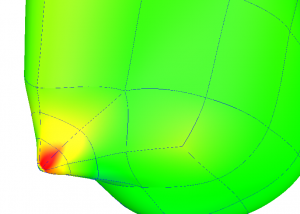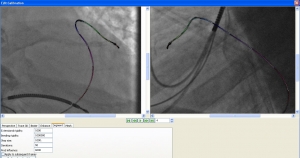Pacemaker Lead Mechanics
Each year, approximately 200,000 pacemakers are implanted in the United States in bradycardic patients, who derive a clear benefit from pacing therapy. Traditional cardiac pacemaker systems generally include a subcutaneous pulse generator placed in the chest wall and transvenous pacing leads affixed to myocardial tissue. The leads are considered the weakest link of pacing systems. One of the early complications related to lead placement is cardiac perforation.
To help companies quantify the safety of their pacemaker leads during implantation and chronically, Insilicomed provides the following analyses to determine under what conditions a lead may perforate the myocardium. And, we provide biplane medical image analysis to estimate how leads bend in situ for use in design and bench testing. Contact Insilicomed for more information…



